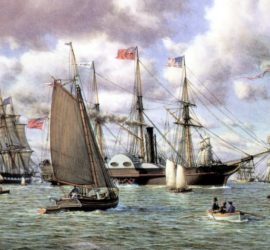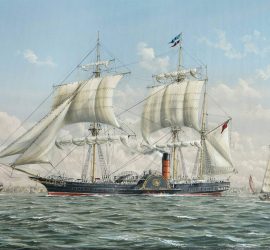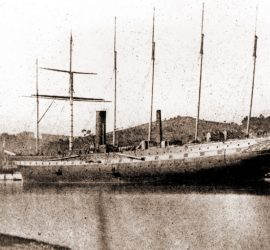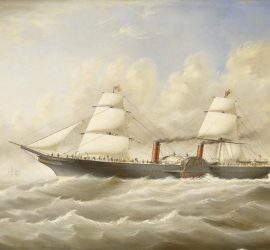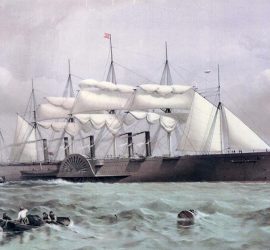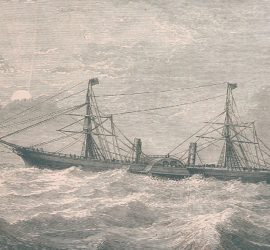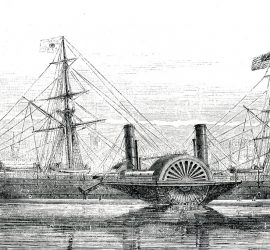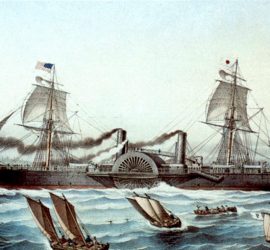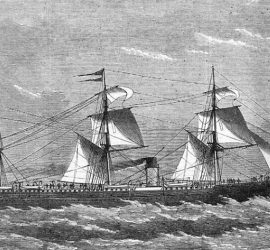1838 – 1856 / Isambard Kingdom Brunel’s Great Western proved the feasibility of steam-powered ships on the high seas.
Articles
1840 – 1880 / Samuel Cunard’s pioneering vessel, the Britannia was the very first ship of the Cunard Line.
1845 – Present Day / Isambard Brunel’s technical marvel, the Great Britain did away with paddle wheels and was built with an iron hull. She survives to this day, in the very Bristol dock from which she was once launched.
1850 – 1854 / A ship of the ill-fated Collins Line, the Arctic sank after a collision in foggy weather in 1854, with great loss of life.
1856 – 1872 / Although her career was not very dramatic, the Persia is noteworthy for being Cunard’s first iron-hulled ship.
1860 – 1888 / Unique in almost every respect, the brainchild of Isambard Kingdom Brunel was too far ahead of her time, and never quite found success.
1862 – 1904 / An unusually long-lived vessel, Cunard’s Scotia was a speed queen of her age and saw a second life as a cable-laying ship.
1864 – 1899 / Originally a paddle-steamer, the Compagnie Générale Transatlantique’s Washington was refitted in 1868 and became the first twin-screw liner on the North Atlantic run.
1865 – 1895 / Also known as Atlantique and Amerique / An early vessel of the CGT, this French paddle-wheeler was eventually refitted with a single propeller.
1867 – 1902 / Also known as Waesland / Catching up with modern technology of the time, the Cunard Line launched the Russia as their first ship built with a propeller rather than paddle wheels.

